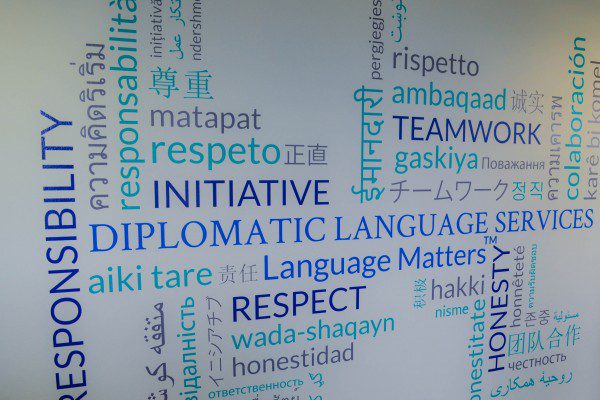Dudley Hagen currently works at DLS as a Language Training Supervisor but one of his favorite previous jobs was working as a full-time translator. He shares some of his experience with us in the following interview.
1) How many years did you work as a translator? Which languages?
I worked for seven years as a translator from Russian to English. That was my full-time job, although I was doing other things on the side.
2) Is there anything unique about the languages you worked on in terms of translation?
This is a tough question, because every language is unique. There is a notable difference between written Russian and English in terms of style. Russian tends more to a formal, academic, or official style in writing. The sentences can be long and complex, and this is taken as the mark of a writer’s being serious and competent. In modern English, the tendency is to a direct and transparent style, making the ideas clear and easy to absorb. In most of the work I did, it was possible to change the author’s style as long as the meaning was accurately conveyed. This is not like translating literary prose, where the style is actually part of the meaning.
3) What type of translation/subject matter did you work on the most?
Most of the material was about world politics and international relations. But there were memoirs, “general interest” magazine articles, and some fiction too.
4) What was your most interesting project?
Perhaps the most interesting was a full-length novel by an Uzbek author about his childhood in Bukhara. The setting was exotic even for Russians, and the author would often employ dream-like imagery. Like when the boy realized that his name spelled backwards was a word in his language, and imagined a snake shedding its skin, crawling backwards and reciting a spell to leave all the bad magic of the past behind.
5) What did you enjoy most about the work? What was the hardest part about it?
Making a good translation gives the same kind of satisfaction that a craftsman gets in turning out a good piece of work. Most of the effort will be invisible to users, who rightly expect that the translation will read smoothly, even enjoyably. They will never know the particulars of how it was put together, tuned, and polished. Some (monolingual) people seem to think translation doesn’t involve much more than retyping the words in another language.
With a written translation, there is usually time to research and revise. Quite often a problem that had been frustrating me would be solved in a flash of insight while I was doing something completely different. These little “aha moments” were exciting for me, even though I couldn’t explain them to the people around me.
The hardest part, to be honest, was translating things that bored me and were carelessly written in the first place. I sometimes felt I was reading the text more carefully and critically than the author ever had.
6) What tips would you give to someone that’s starting out in translation work?
The first thing is not to let the original lead you by the nose. Awkward language in a translation is something to avoid. “But that’s what it says” is not an excuse. Think harder, be creative, and you will probably find a way to express exactly what the original means without sounding awkward. The only exception would be translating for specialists who only need the translation as support when they are examining the original. This kind of translation is called a “pony” when it’s used by language students to get through assigned readings. Nobody reads a pony for enjoyment.




